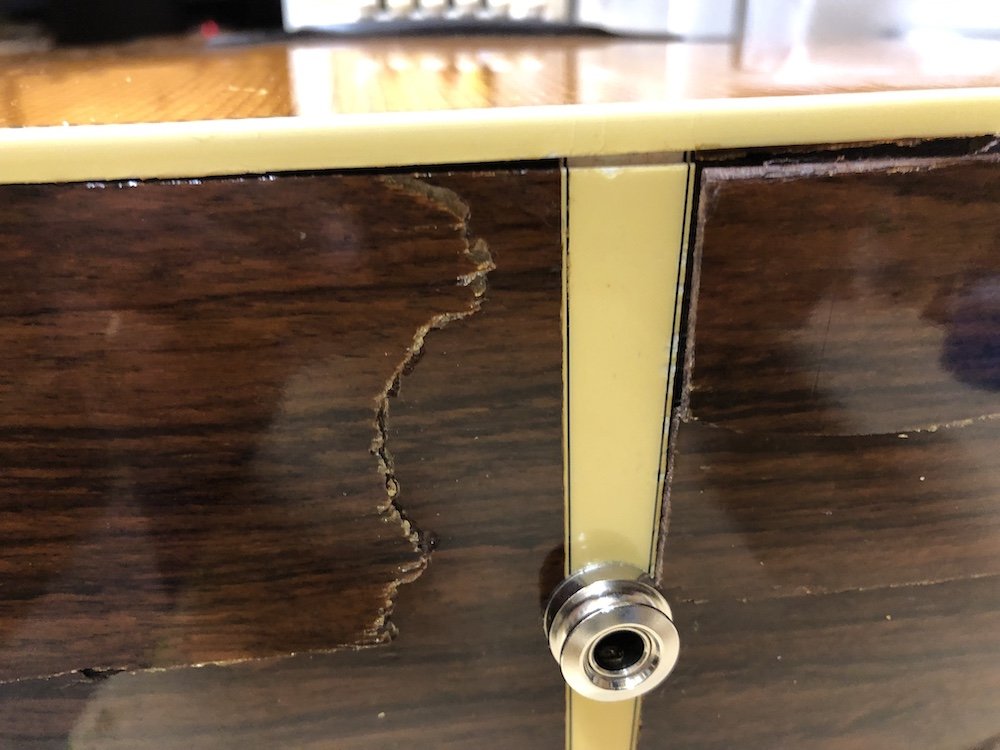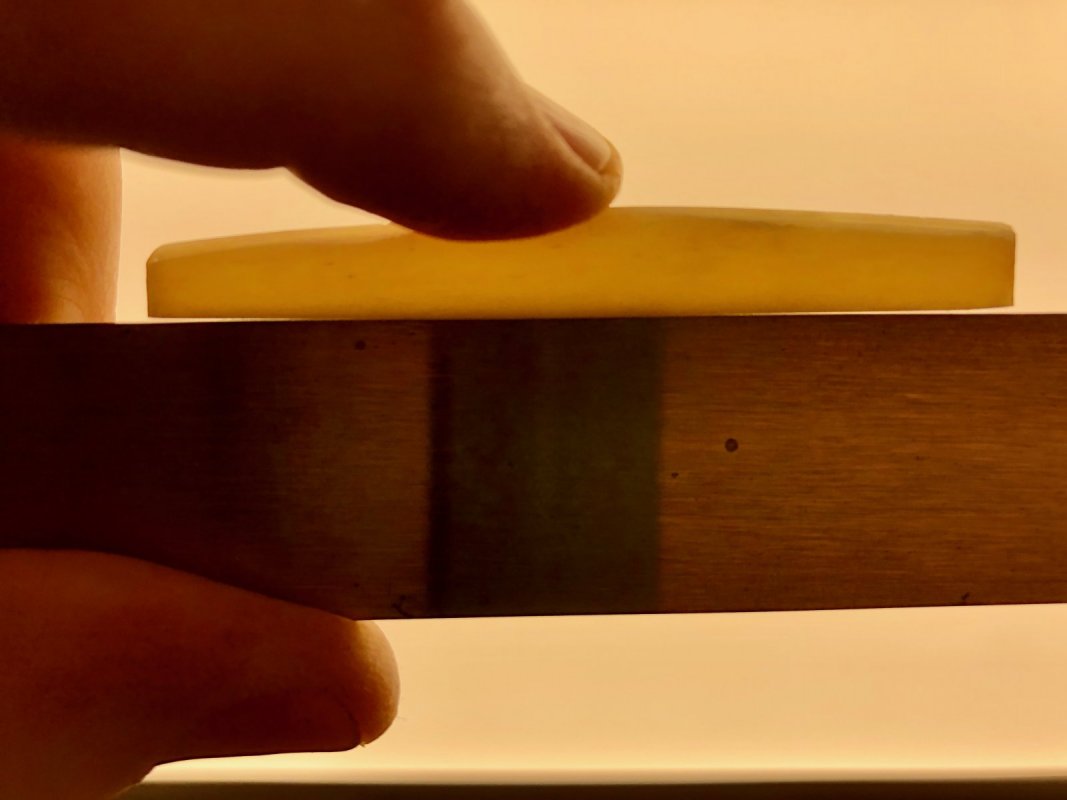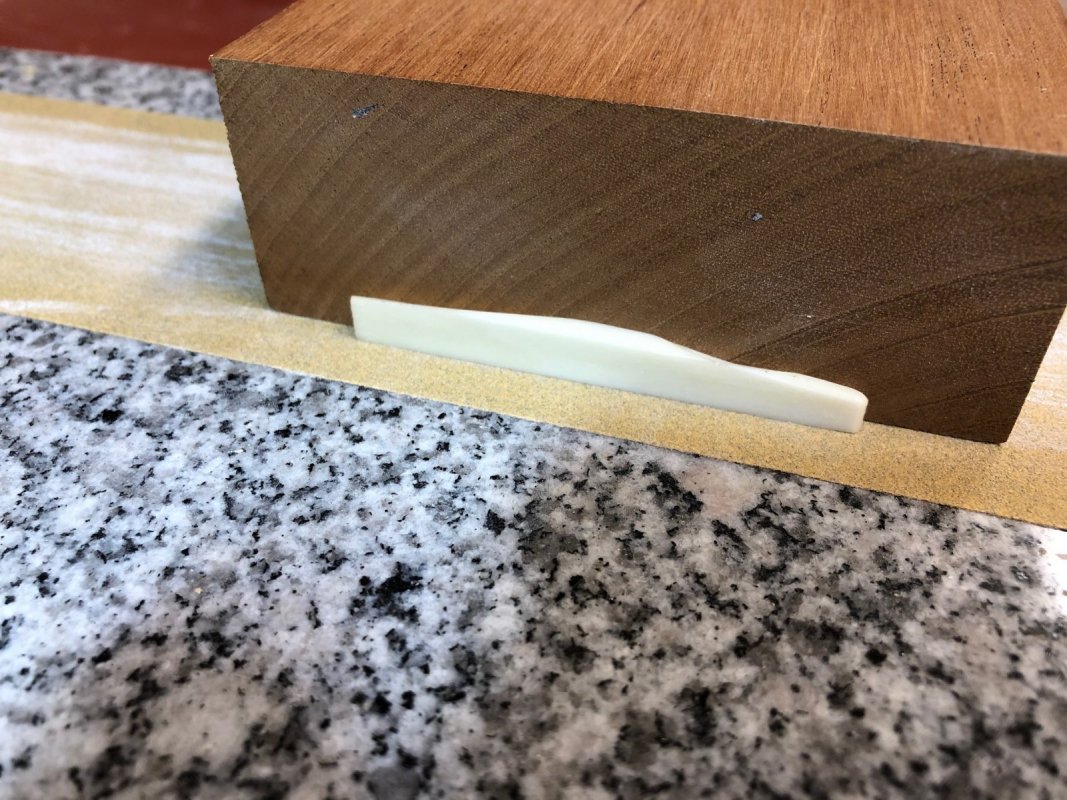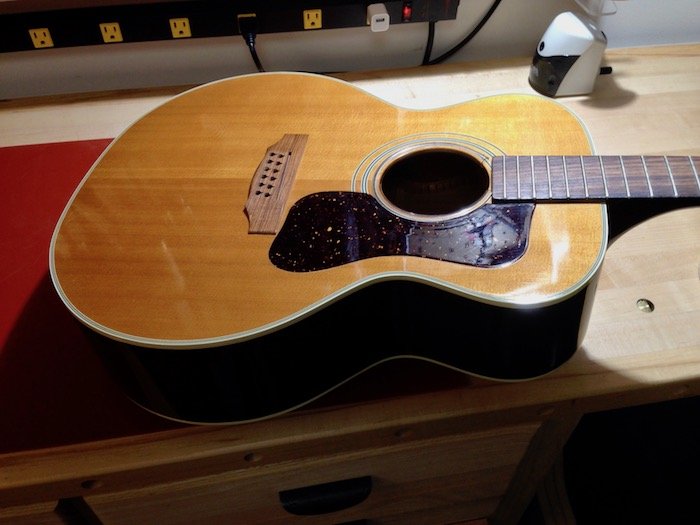Warning: Non-Guild content. May not be suitable for some viewers.
A dear friend contacted me with a sad story. He had set an Anniversary Martin D-28 HD on a Grand Piano intending to retrieve a stand on which to properly rest the guitar. In so doing, he caught his foot on the cable plugged in to the end pin jack of that guitar, and ...
... the guitar exploded as it hit the stage! It spent several months at a repair shop before its anxious owner was informed that "it just wasn't worth repairing." Naturally, he then called me. Short version: I rebuilt the Martin. It was "okay" before, but after? Wow! It became a fantastic instrument, one that I would be proud to own.
For some context, I took what was left of the guitar apart, carefully removing the back (pieces) from the sides (pieces) from the soundboard (mostly intact). I did not replace the soundboard, but I rebraced it, added a new bridgeplate, micro-cleated the cracks and splits. The ebony fretboard looked like the backyard after the dogs have dug up all their bones, so I planed it flat and refretted it. The gouges on the back of the neck looked like open sores, so I repaired them. Most of the work I did was on the jigsaw puzzle of Rosewood back and sides, before reassembling the instrument. I added new herringbone purfling and new binding to the body, front and back. I tinted the back of the neck and got everything prepped for spraying with clear Nitro...
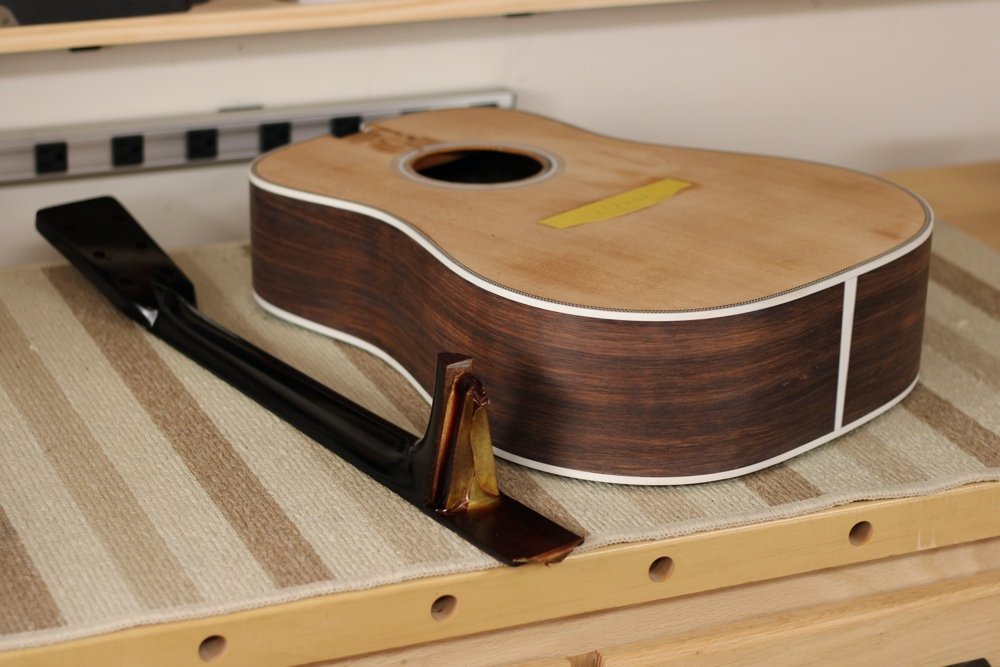
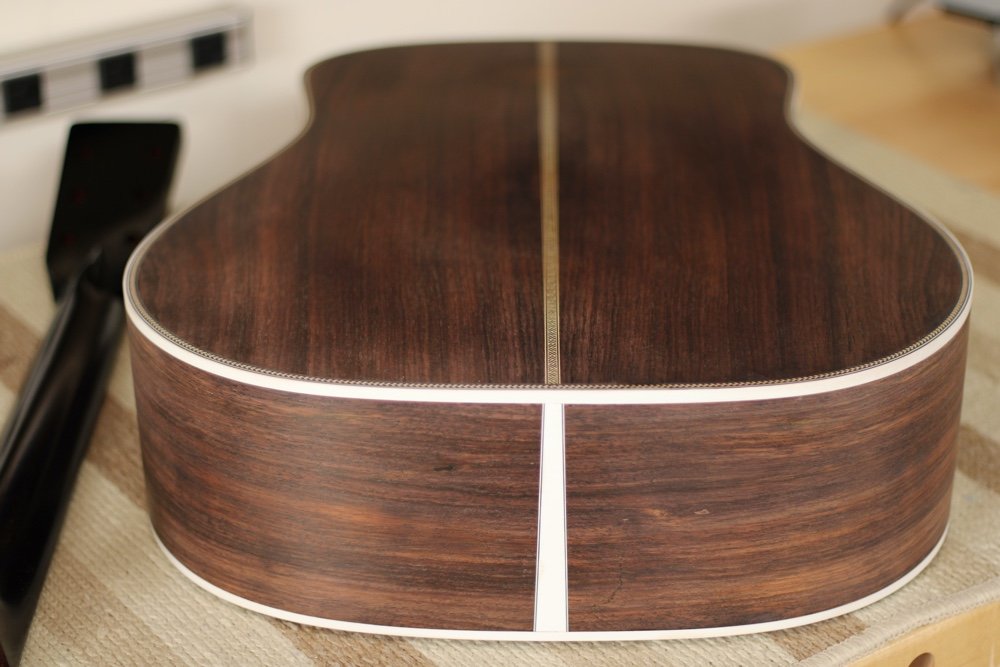
I made a new ebony bridge, reset and glued the neck on and glued the bridge down (to raw wood - not the lacquer finish). I fashioned a new bone nut and saddle. The saddle was perfectly intonated. With a new set of strings, it sounded amazing and played like "butta."
Fast-forward 1 year...
That same owner purchased a brand new Gibson Hummingbird, the 1960 remake version (Torrified top, VOS finish, the works). He wanted me to install a pickup in it and set it up "like the Martin. And, while I was at it, could I check the Martin, 'cause he had tried to lower the saddle a bit but now it didn't sound as good."
When I first strummed the Hummingbird my reaction was, "Meh!". I'm sorry, but a $6k guitar should sound better.
I added the same JME Ultra Tonic pickup to the Gibson that I had installed in the Martin, and calibrated it on the computer for anti-feedback. The bone nut that came with the Hummingbird had the slots cut properly, but they were much too high. This made the strings more difficult to depress, so I lowered the slots. I fashioned a new bone saddle to replace what came with the guitar. It was a non-intonated piece of bone, clearly cut on a CNC (with that tell-tale ridge running down the center of the top of the saddle). Curious, I checked the base of the saddle against a straightedge. It was seriously curved, as in, not flat, not at all! It rocked, just not in a good way. I set it aside to show the owner, later.
With the new saddle and a brand new set of D'Addario XS 80/20 Lights installed, it was a different guitar. Though I personally do not care for the "vintage finish," the guitar now sounded great, just what I would expect from an expensive Mahogany dreadnought.
I put the Hummingbird in its case and unstrung the Martin to get at the saddle. Sure enough, in his attempt to "slightly lower the action," the owner had unwittingly sanded a beautiful curve into the bottom of the saddle. I flattened the bottom of the saddle, returned it to its flat slot, re-strung the guitar and Wham! that banjo-killer volume with crystal-clear tone was back.
The owner retrieved both his instruments, now performing as they should -
The moral of the story? Two popular and distinctly different acoustic guitars that should have sounded wonderful didn't because their respective saddles were not seating properly. Once corrected, the guitars rocked - the saddles didn’t.
Is your saddle slot flat?
Is your saddle perfectly seated in its slot?
It may be worth checking.
A dear friend contacted me with a sad story. He had set an Anniversary Martin D-28 HD on a Grand Piano intending to retrieve a stand on which to properly rest the guitar. In so doing, he caught his foot on the cable plugged in to the end pin jack of that guitar, and ...
... the guitar exploded as it hit the stage! It spent several months at a repair shop before its anxious owner was informed that "it just wasn't worth repairing." Naturally, he then called me. Short version: I rebuilt the Martin. It was "okay" before, but after? Wow! It became a fantastic instrument, one that I would be proud to own.
For some context, I took what was left of the guitar apart, carefully removing the back (pieces) from the sides (pieces) from the soundboard (mostly intact). I did not replace the soundboard, but I rebraced it, added a new bridgeplate, micro-cleated the cracks and splits. The ebony fretboard looked like the backyard after the dogs have dug up all their bones, so I planed it flat and refretted it. The gouges on the back of the neck looked like open sores, so I repaired them. Most of the work I did was on the jigsaw puzzle of Rosewood back and sides, before reassembling the instrument. I added new herringbone purfling and new binding to the body, front and back. I tinted the back of the neck and got everything prepped for spraying with clear Nitro...


I made a new ebony bridge, reset and glued the neck on and glued the bridge down (to raw wood - not the lacquer finish). I fashioned a new bone nut and saddle. The saddle was perfectly intonated. With a new set of strings, it sounded amazing and played like "butta."
Fast-forward 1 year...
That same owner purchased a brand new Gibson Hummingbird, the 1960 remake version (Torrified top, VOS finish, the works). He wanted me to install a pickup in it and set it up "like the Martin. And, while I was at it, could I check the Martin, 'cause he had tried to lower the saddle a bit but now it didn't sound as good."
When I first strummed the Hummingbird my reaction was, "Meh!". I'm sorry, but a $6k guitar should sound better.
I added the same JME Ultra Tonic pickup to the Gibson that I had installed in the Martin, and calibrated it on the computer for anti-feedback. The bone nut that came with the Hummingbird had the slots cut properly, but they were much too high. This made the strings more difficult to depress, so I lowered the slots. I fashioned a new bone saddle to replace what came with the guitar. It was a non-intonated piece of bone, clearly cut on a CNC (with that tell-tale ridge running down the center of the top of the saddle). Curious, I checked the base of the saddle against a straightedge. It was seriously curved, as in, not flat, not at all! It rocked, just not in a good way. I set it aside to show the owner, later.
With the new saddle and a brand new set of D'Addario XS 80/20 Lights installed, it was a different guitar. Though I personally do not care for the "vintage finish," the guitar now sounded great, just what I would expect from an expensive Mahogany dreadnought.
I put the Hummingbird in its case and unstrung the Martin to get at the saddle. Sure enough, in his attempt to "slightly lower the action," the owner had unwittingly sanded a beautiful curve into the bottom of the saddle. I flattened the bottom of the saddle, returned it to its flat slot, re-strung the guitar and Wham! that banjo-killer volume with crystal-clear tone was back.
The owner retrieved both his instruments, now performing as they should -
The moral of the story? Two popular and distinctly different acoustic guitars that should have sounded wonderful didn't because their respective saddles were not seating properly. Once corrected, the guitars rocked - the saddles didn’t.
Is your saddle slot flat?
Is your saddle perfectly seated in its slot?
It may be worth checking.
